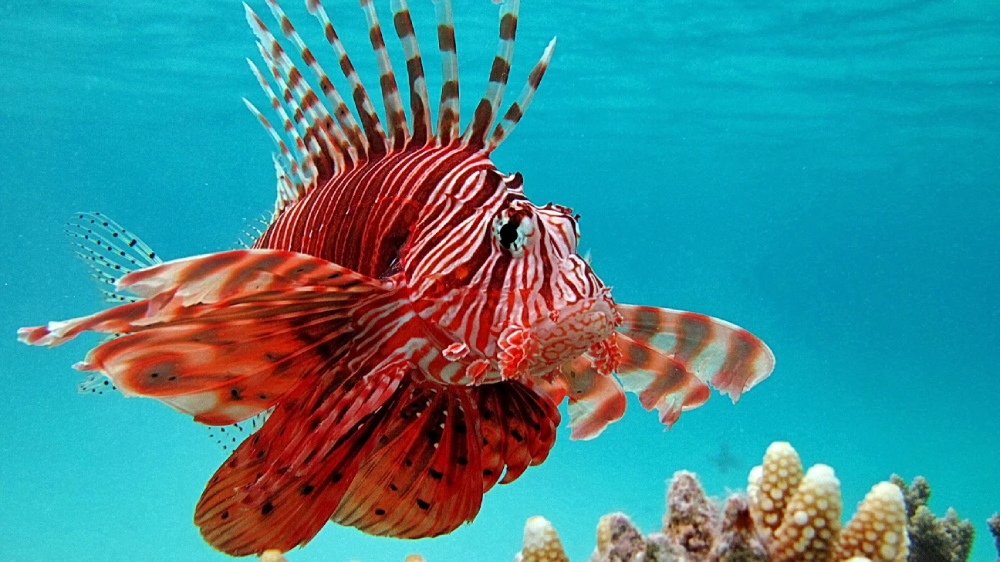Introduction to Lionfish
Lionfish, belonging to the genus Pterois, are native to the Indo-Pacific region. With their vibrant stripes, elongated fins, and distinctive fan-like pectoral fins, they are among the most stunning creatures. However, their beauty belies a voracious appetite and a formidable arsenal of venomous spines.
The Invasion
The trouble began in the 1980s when this creature started appearing in waters off the United States. The exact cause of their introduction remains uncertain, but prevailing theories suggest that lionfish were released into the wild by aquarium enthusiasts or escaped from damaged aquariums during hurricanes.
With no natural predators in their new environment and a rapid reproductive rate, their populations exploded. They spread throughout the Caribbean, Gulf of Mexico, and along the eastern seaboard of the United States, as far north as Rhode Island. Their invasion has since extended into the Mediterranean Sea, posing a threat to marine life in yet another ecosystem.

Ecological Impact
These animals are opportunistic predators, consuming a wide variety of fish and crustaceans. Their diet includes juvenile reef fish, which are crucial for maintaining the balance of coral reef ecosystems. By preying on these small fish, lionfish disrupt the delicate equilibrium of reef communities, leading to declines in native fish populations.
Moreover, they are popular to outcompete native predators for food resources. Their presence can cause cascading effects throughout the food chain, altering the structure and function of entire ecosystems. Coral reefs, already under pressure from climate change and pollution, face additional stress from the proliferation of lionfish.
Venom and Defense Mechanisms
One of the lionfish’s most distinctive features is its venomous dorsal and pelvic spines. These spines contain potent neurotoxins that can cause intense pain, swelling, and even paralysis in humans. While not usually lethal, lionfish stings can result in severe discomfort and medical complications, making them a hazard to divers and fishermen.
To protect themselves from predators, they employ a combination of warning coloration and spines. Their bold stripes and flamboyant fins advertise their toxicity, deterring potential predators. If threatened, lionfish can erect their spines, presenting a formidable barrier to would-be attackers.
Mitigation Efforts
Recognizing the urgency of the situation, scientists, conservationists, and government agencies have mobilized efforts to control lionfish populations and minimize their impact on marine ecosystems. Various strategies have been employed, including targeted removals, public awareness campaigns, and culinary initiatives to promote lionfish consumption.
Divers are encouraged to hunt this breed, both to protect native species and to mitigate the spread of the invasive population. Some organizations organize lionfish derbies and tournaments, offering rewards for the most lionfish caught. Additionally, chefs have embraced lionfish as a sustainable seafood option, incorporating it into menus to raise awareness and stimulate demand.
Conclusion
The invasion of the lionfish represents a significant ecological challenge that requires coordinated action at local, regional, and international levels. While the battle against this invasive species is ongoing, there is hope that through continued research, conservation efforts, and public engagement, we can mitigate the impact of lionfish and safeguard the health of our oceans for future generations.









